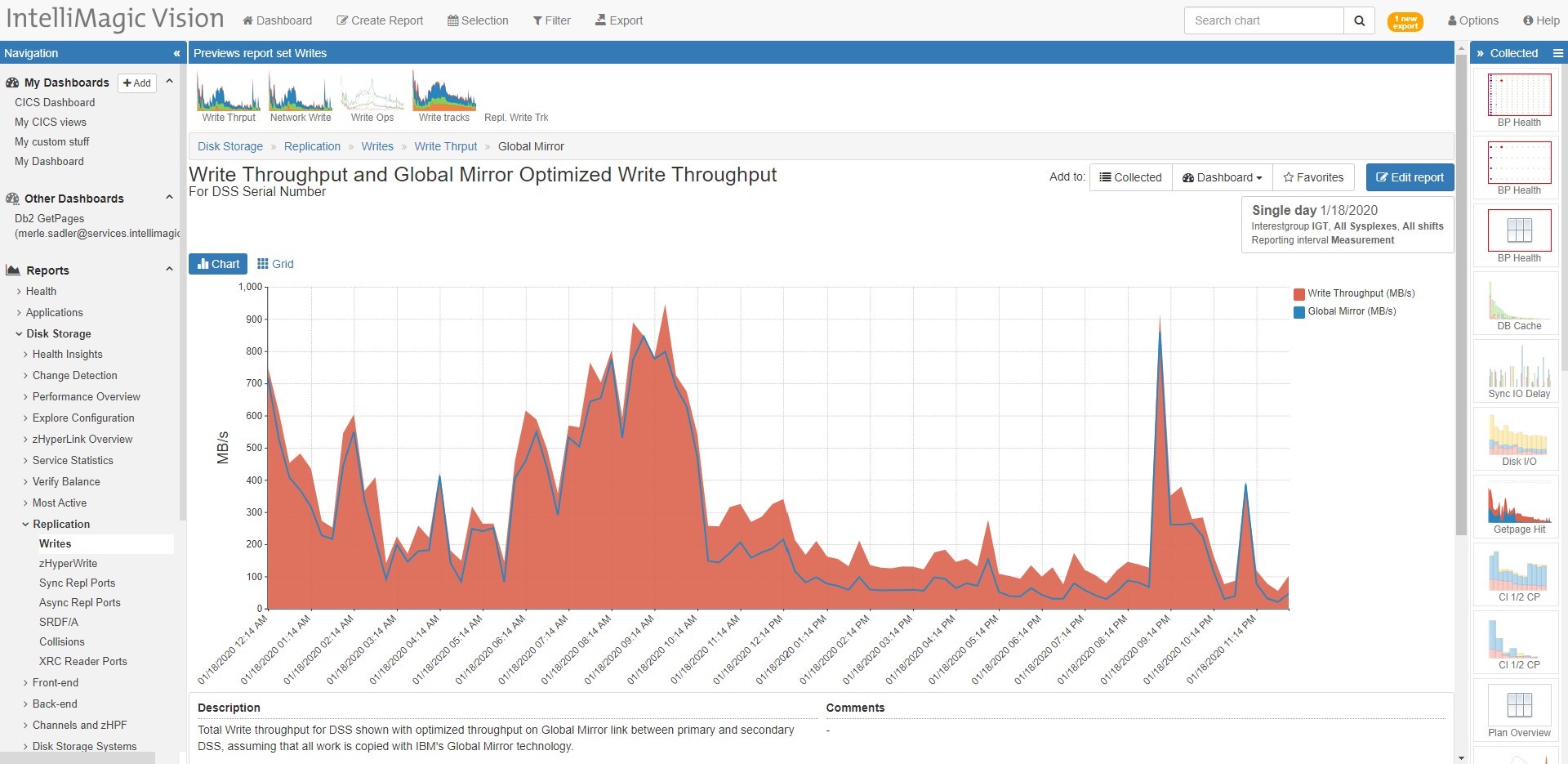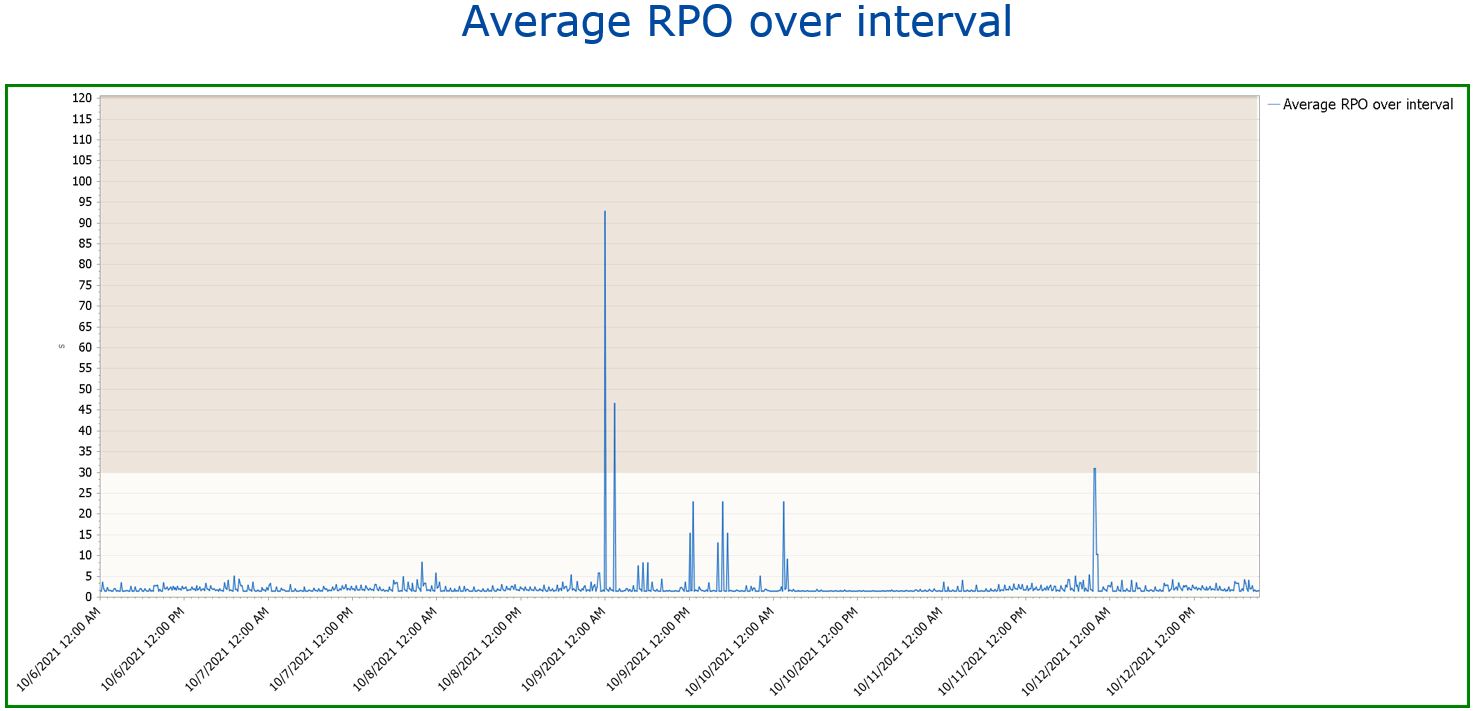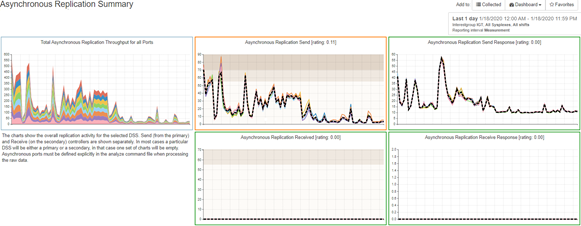Sizing and Analysis for all RMF 74.8 Statistics
IntelliMagic Vision provides sizing and analysis capabilities for the Asynchronous Copy Services implementations from all the vendors that populate the RMF 74.8 link statistics: IBM’s Global Mirror, EMC’s SRDF/A, HP’s Continuous Access Asynchronous and Journal, and HDS TrueCopy/Async and Universal Replicator.
How Far Behind Could my DR Get?
With Asynchronous data mirroring, an installation can deliberately configure less bandwidth than what is needed in the peak intervals, accepting that this will have an impact on the currency of the secondary data image: the target of how far the secondary data image will run behind on the primary data image may be willingly compromised during a certain period of the day, for instance during the batch hours.
With IntelliMagic Vision for z/OS, the user can define the amount of bandwidth available and will then be presented with information about how long the secondary delay will be over target. This allows the capacity planner to see when and for how long delays would occur such that it is possible to take a well-informed decision about the bandwidth needed for this specific I/O load.
Account for Rewrites
Asynchronous data mirroring as implemented in IBM’s Global Mirror and EMC’s SRDF/A, operates in cycles. This may have an impact on the amount of bandwidth needed to mirror the data since only the last update of a record within an interval needs to be transmitted to the secondary disk subsystem. IntelliMagic Vision computes the amount of write activity (expressed in MB /sec) for those devices that will be part of the data mirroring configuration and the amount of data that would have to be transmitted.
Monitor Replication
IntelliMagic Vision is valuable for managing production Asynchronous Copy Services from IBM or EMC. For IBM customers running Globally Disbursed Parallel Sysplex (GDPS) reporting is available based on SMF type 105 records. For EMC customers running Symmetrix Remote Data Facility Asynchronous (SRDF/A) reporting is done based on SMF type 206 records.
IBM Global Mirror reporting provides guidance on the health of your replication sessions. If replication falls behind you can quickly determine root cause and act before a Global Mirror outage occurs. You can also track your Recovery Point Objective (RPO) and be sure that any Service Level Objectives are met.
EMC SRDF/A reporting also focuses on the health of the replication environment. It will show you the average and maximum cycle times and trigger an alert when thresholds are exceeded often enough. Reports on many other SRDF/A metrics such as cycle time target, cycle size, and repeat writes are also available.
zSystems Performance Management
Optimize z/OS Mainframe Systems Management with Availability Intelligence
Benefits
Db2 Performance Management
Prevent Availability Risks and Optimize Db2 Performance
Benefits
Easy visibility into key Db2 metrics through SMF records is crucial to proactively prevent availability risks and to effectively manage and optimize performance.
CICS Performance Management
Monitor and Profile CICS Transactions and Regions with IntelliMagic Vision
Benefits
IntelliMagic Vision enables performance analysts to manage and optimize their z/OS CICS transactions more effectively and efficiently, as well as proactively assess the health of their CICS regions.
Virtual Tape Performance Management
Proactively Manage Virtual and Physical Tape Environments
Benefits
IntelliMagic Vision enables performance analysts to manage and optimize their z/OS Virtual Tape environments more effectively and efficiently.
Disk & Replication Performance Management
Automatically Detect Disk Performance Risks & Quickly Resolve Issues
Benefits
IntelliMagic Vision enables performance analysts to manage and optimize their z/OS Disk and Replication environment more effectively and efficiently.
MQ Performance Management
Optimize and Analyze MQ Activity and Performance
Benefits
IntelliMagic Vision enables performance analysts to manage and optimize their z/OS MQ configurations and activity more effectively and efficiently, as well as proactively assess the health of their queue managers.
z/OS Network Performance Management
Automatically Monitor Mainframe Network Security and Protect Your Data
Benefits
IntelliMagic Vision automatically generates GUI-based, interactive, IBM best-practice compliant rated reports that proactively identify areas that indicate potential upcoming risk to TCP/IP health, performance, and security.
z/OS Connect: Modern Mainframe API Environment
Optimizing Mainframe API Monitoring for Improved Resource Management
Benefits
Book a Demo or Connect With an Expert
Discuss your technical or sales-related questions with our mainframe experts today



